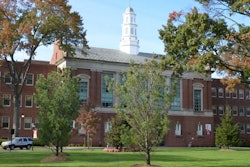The numbers tell the story.
African-American college students earn bachelor’s degrees at nearly half the rate – Hispanic students are nearly worse at less than a third – than white students. Low-income students get their undergraduate degrees at one-eighth the rate of economically more advantaged students.
Minority and low-income high school students find it tougher than other students to even afford a college education as costs continue to rise nationwide.
Nineteen public higher education systems across the country have banded together to try to reverse those trends. They are participating in the Access to Success initiative, a National Association of Systems Heads (NASH) project aiming to shave at least to half the gaps in both college-going and degree completion rates that separate low-income and minority students from others.
“This has the potential to be one of the most significant initiatives impacting the future of higher education in America,” said Dr. Ralph Slaughter, president of Southern University System, the nation’s only historically Black university system. “Recognizing the need to make attaining a college education, not only more accessible to minority and low-income students, but to develop strategic efforts in key areas that ensure their success and ability to graduate places this as a revolutionary move.”
The project’s 19 systems, which represent more than two million undergraduates across the country, plan a four-pronged approach to working on the problem:
· increasing student access in remedial courses and other large-enrollment introductory courses;
· managing costs and investing in student success;
· improving preparation among entering students;
· maximizing financial aid for low-income students.
The need for the project couldn’t be clearer, said Ross Wiener, vice president for program and policy for Washington, D.C.-based The Education Trust, which promotes high academic achievement for students, particularly minorities.
“We are not doing very well for minority and low-income students,” Wiener said. “In this global economy, it’s clear that we need more college graduates, so for the health of our democracy and the health of our economy we have to focus on these equity issues,” he said.
The goal of the project is to cut by half the gaps in college attendance and college success that separate low-income and minority students from White students by 2015. The Education Trust, will release updated data annually to track the project’s progress.
Funding is partially coming in the form of grants.
“The future of our nation demands more college graduates, and I’m pleased that our partners in university systems across the country are committed to meeting this challenge,” said Tom Meredith, NASH president and Higher Education commissioner of the Mississippi Institutions of Higher Learning. NASH consists of the heads of the nation’s 52 college and university systems of public higher education.
The groups will be pulling together their internal resources and sharing with each other ways to make these goals reality. They’ve already met, discussing collegiate cost management issues last week.
All say the timing of the project is not a moment too soon.
“My state needs thousands more graduates than we’re producing right now in science, math, engineering and education,” said University System of Maryland chancellor, William E. Kirwan. “At the same time, Maryland’s high school graduates will be majority-minority students within the next two years. We simply cannot meet the needs of our states without doing a better job with our underrepresented minority students.”
Weiner said that while making sure a broader swath of American students are doing well and ensuring the nation’s status as a global leader is a chief reason the systems came together on this, their main impetus was simpler.
“They decided to take on this initiative because this is what they got into public education for,” he said.
Paul Browning, a spokesman for the California State University system, said they’ve been working on their own already in trying to boost minority success rates by doing things like going to African-American churches to talk about ways to help prepare students for college and for dealing with the costs of college.
“It has been helping and being involved in this program will help us in what we’re doing, but it’ll also increase our effectiveness,” he said.
The college and university systems participating in Access to Success include:
– California State University System
– Connecticut State University System
– State University System of Florida
– University of Hawaii System
– Kentucky Council on Postsecondary Education
– University of Louisiana System
– Southern University and A&M College System
– University of Maine System
– University System of Maryland
– Minnesota State Colleges and Universities
– Mississippi Institutions of Higher Learning
– University of Missouri System
– Montana University System
– City University of New York
– State University of New York
– University of Puerto Rico System
– Rhode Island Board of Governors for Higher Education
– South Dakota Board of Regents
– Vermont State Colleges
Said U.S. Education Department Secretary Margaret Spellings of the venture: It is “a commitment by state systems for better work on behalf of poor and minority students. They’re holding themselves accountable.”
–Add Seymour Jr.
There are currently 0 comments on this story.
Click here to post a comment
© Copyright 2005 by DiverseEducation.com



















